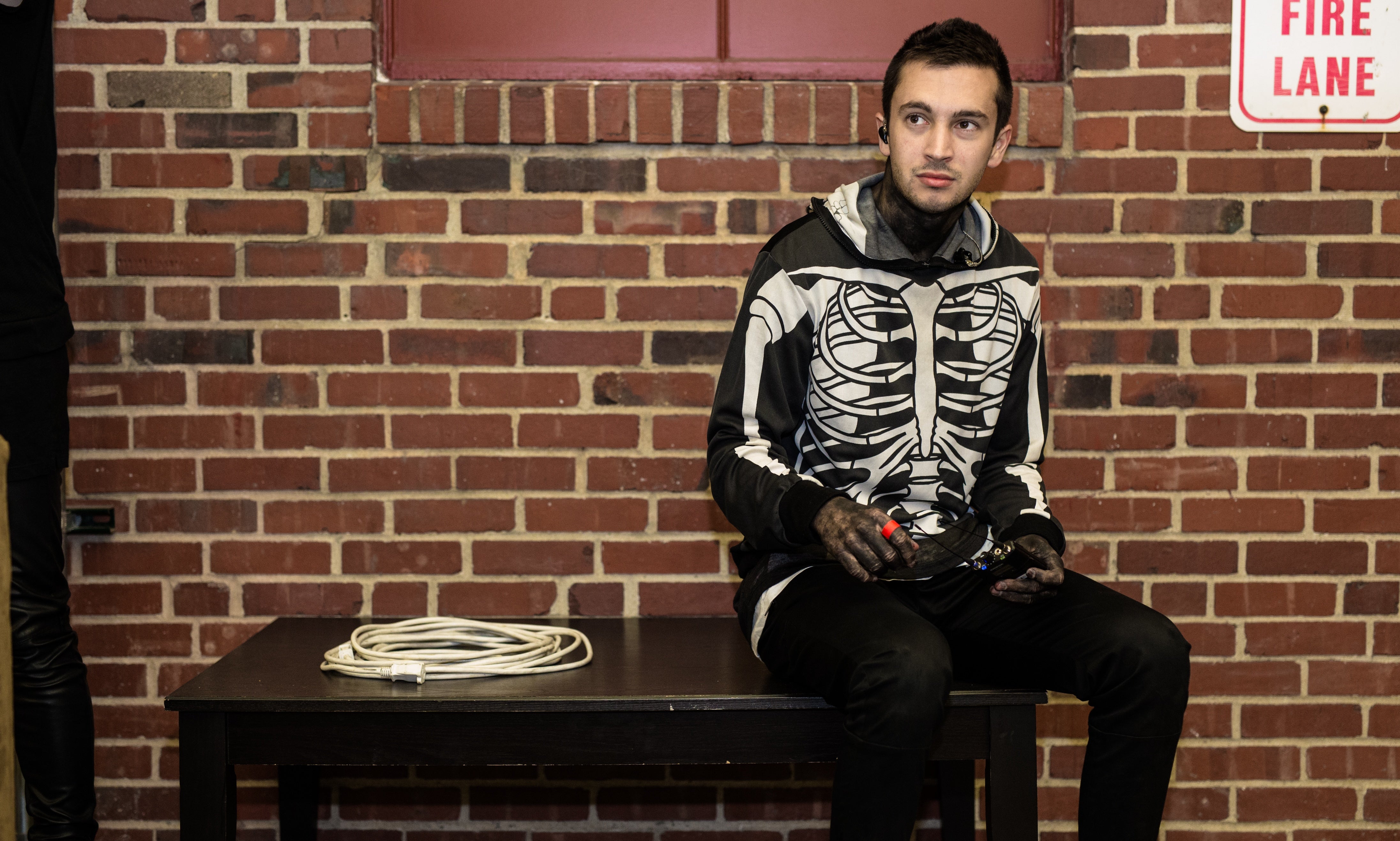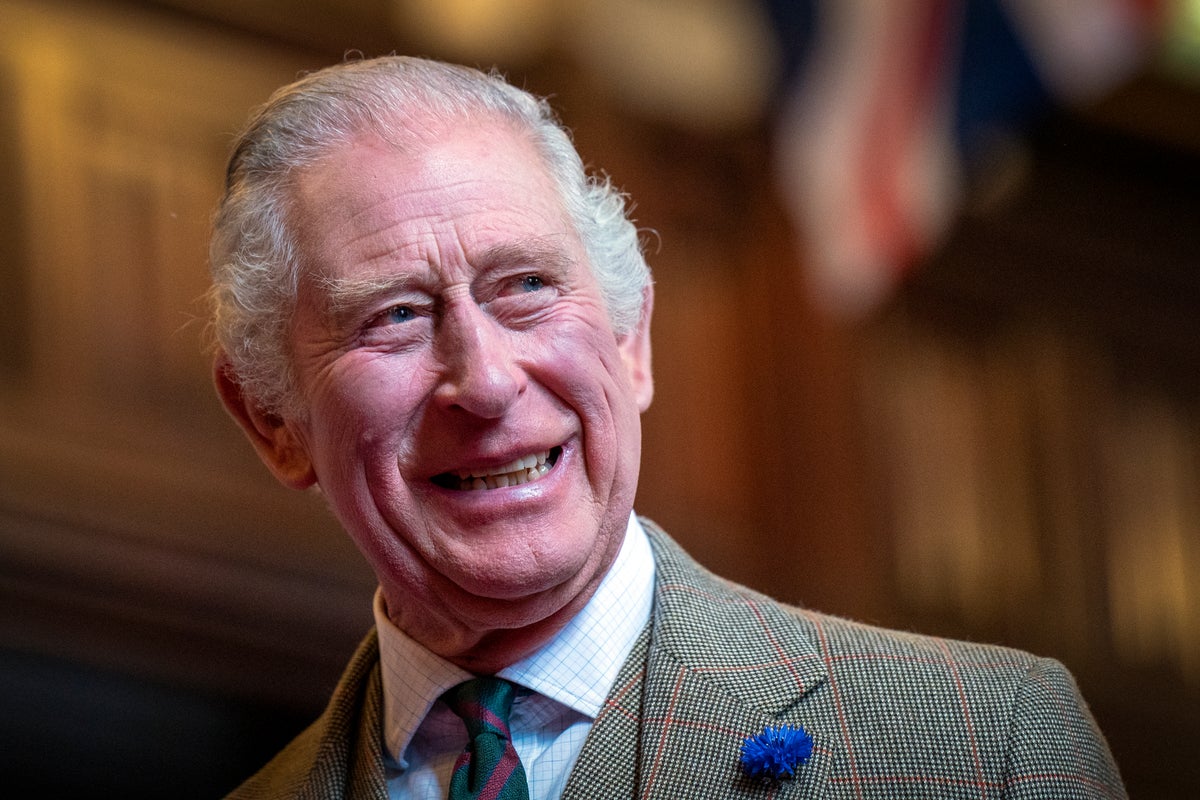ARTICLE AD BOX
Twenty One Pilots are the biggest alternative band to come out of the streaming era by any metric. As you’d expect, their songs are a fluid blend of clashing genres that want to turn uneasy fears into cause for celebration. While you might not recognise the band name, you’ll definitely know the tracks: a couple of them have been streamed more than 2 billion times on Spotify. This week, their unlikely breakthrough album Blurryface turns 10.
Taking inspiration from a lifetime of musical touchpoints, the band toyed with rock, reggae and indie-pop across Blurryface. It was messy and jarring, there was a lot of ukulele, but the whole thing was delivered with so much conviction; it worked. “We did want to make something that felt new,” admits vocalist Tyler Joseph. “But we weren’t looking over the top of our small fan base, trying to reach this broad audience. That just happened.”
And it happened hard. Released on 17 May 2015, Twenty One Pilots’ fourth album was the first crossover album post-Spotify, and perhaps the last proper breakout rock record. It instantly hit No 1 in America and reached No 14 in the UK, but went on to spend 120 weeks in the Top 100. “We didn’t even know what getting a ‘No 1’ meant,” Joseph admits with a grin. He, just like bandmate, drummer Josh Dun, is guarded in interviews, sincere in song and not afraid to be a little silly onstage.
Nothing much changed for the two-piece at first as they set off on their already-announced Blurryface world tour, but things began to snowball. In November, they played a sold-out headline show at London’s Shepherd’s Bush Empire to 2,000 fans. The following February, it was Brixton. In November 2016, it was a trio of gigs at Alexandra Palace with more than 30,000 in attendance. “That’s when we realised something was happening,” says Dun.
Away from the road, Blurryface was racking up numbers on streaming as well. The chirpy funk of “Ride” soundtracked the summer before the wistful, nostalgic slow-burn of “Stressed Out” took over the radio, won them a Grammy and remains one of the most played songs on Spotify. With well over 2.6 billion plays, it’s above rock party staples such as The Killers’ “Mr Brightside”, Nirvana’s “Smells Like Teen Spirit” and Oasis’ “Wonderwall”.
Two years after it was first released, Blurryface became the first record in history to have every track certified gold in America, with the synth-driven “Hometown” the final song to crack 500,000 sales. There was such hunger for more that their previous record Vessel achieved the same lofty milestone. Just last month, “Doubt” went viral on TikTok. “It’s only looking back now that we fully realise just how much of a beast that album was,” Joseph says backstage at Madrid’s Movistar Arena ahead of another sold-out show.

An early version of Twenty One Pilots formed in 2009 while Joseph was studying at Ohio State University, but things really came into focus when he teamed up with Dun in 2011. The pair built a loyal following through scrappy but ambitious local shows and were eventually signed to Noughties pop-punk powerhouse label Fueled By Ramen (Paramore, Fall Out Boy, Panic! At the Disco) for third album Vessel. It was a moderately successful record, tapping into the same soaring electro pop that had made superstars of Hozier and Cage the Elephant, while their DIY two-man show already featured costume changes and backflips. But unconventional song structures and spoken-word, metaphor-heavy lyrics about depression meant the band felt like a cult concern of the near future – especially in 2015.
Digital downloads may have given kids the ability to listen to all sorts of music, but streaming made it compulsory – and the industry didn’t know how to react. After dominating youth culture throughout the Nineties and 2000s, rock music was in decline (in 2017, hip-hop would officially usurp it as the most popular genre), and bands were fighting to stay relevant. Established acts turned to radio-friendly pop while a new generation were adding half-hearted EDM sections to their snotty pop-punk anthems and claiming they’d always loved hip-hop.
Rather than chasing rapidly changing trends, Twenty One Pilots wrote on the road while touring Vessel and wanted Blurryface to be full of songs that would help them create the perfect setlist for their live show. That’s still the driving force today, says Dun. “We knew we had an audience that trusted us and that was very freeing,” adds Joseph. “It felt like we could go in any direction we wanted.”
Radio hits definitely weren’t what they were aiming for, though. “I remember finishing ‘Stressed Out’ and just thinking ‘Cool, another song done. We’re that much closer to having this record finished,’” says Dun. Their producer even advised them against including the now iconic pre-chorus “My name’s Blurryface and I care what you think” that anyone under 30 has definitely sung along to at least once.
Ten years ago, not a lot of people were really talking about mental health, how they were doing, or what was going on inside their heads.
Josh Dun, Twenty One Pilots
“I had to explain to him that it was going to make sense to the fans,” says Joseph. “That it was a character with a backstory, as well as the name of the album. He trusted us, but I could see it on his face: ‘This song isn’t going to be a hit.’”
“[We had] such ignorance and confidence at the same time,” adds Dun.
The band used the album to introduce the world to Blurryface, a mysterious character that allowed the pair to confront their own anxieties. For live shows, Joseph would use black makeup to paint his throat and hands to represent the hold those fears had over him. “I feel more uncomfortable listening to the album now than when it was released,” he admits, not realising quite how revealing some of those songs were. “Still, writing about mental health on a major label record release was cake compared with trying to explain to our dads what we wanted to do with our lives.”
“Ten years ago, not a lot of people were really talking about mental health, how they were doing, or what was going on inside their heads. But speaking to fans after shows, those conversations were very normal for us,” Dun adds.
Like Green Day’s American Idiot and My Chemical Romance’s The Black Parade before it, the story of Blurryface connected with a generation of kids who were struggling; typical teenage growing pains amplified by the rise of social media.
“It felt like there were all these rules about making music back then. I know I spent a few years before I got into Twenty One Pilots refusing to listen to anything that wasn’t pure guitar music,” says London-based artist Noahfinnce, 25, who now makes chaotic punk music but was inspired by the band to throw in the occasional electronic breakdown. “Twenty One Pilots were in that pop-punk, emo scene, but they didn’t sound like any other band around. It takes balls to not give a s*** about fitting in.”
He believes the record connected with so many people because of how open the lyrics were about mental health, but also because of the strong visual world the band built around Blurryface. Online music fandom was at its peak thanks to sites like Tumblr and how accessible the internet had become, before Twitter turned those virtual communities into unmoderated shouting competitions. “Nowadays, everybody is in a fandom because everyone is online,” Noahfinnce explains. “Back then, it was this die-hard community that really gave you a sense of belonging.”
In interviews, Twenty One Pilots acted like putting out a hugely influential album was all part of the master plan. They took their trousers off before walking onstage to collect their first Grammy, fulfilling a promise they made to each other years earlier while watching the ceremony at home in their pants when nobody knew who they were. “We’re big fans of not putting a ceiling on our ambitions. Whatever you could imagine is probably what we’re going for,” Joseph told me back in 2015.
“It was a bit of a defence mechanism,” he admits today. “Josh [Dun] and I really did talk about what we wanted to accomplish when we started this band and so when it was all happening, we weren’t looking at each other and going ‘Can you believe this?’, we just kept saying ‘This is what we talked about.’” But there’s a big difference between talking about sold-out arena tours and actually spending two years on the road. “We weren’t really given any time to appreciate what was happening. We also didn’t allow ourselves to understand it, because it just seemed too overwhelming.”
“It’s only now, talking to you, that we start to go ‘Wow, that album really was crazy.’ It was such an insane moment in our career.”

Before the hype of “Stressed Out” had died down, Twenty One Pilots had another hit with “Heathens”, their prickly outsider anthem of community that had been written for the not-very-good Suicide Squad movie. It also set their stall out for what was to come next. Instead of chasing viral highs by repeating the many tricks they’d nailed on Blurryface, the band went deeper with knotty follow-up album Trench. The record rapidly expanded the lore to include a plucky band of freedom fighters rebelling against a gang of oppressive “bishops” in the fictional city of Dema and expanded the band’s sonic palette with emo, industrial metal and rap-rock. They headlined Reading and Leeds festival the following year and regularly sell out arenas across the world, but nothing has matched the success of Blurryface. “We didn’t realise how difficult it was to accomplish some of the things that we did with that album,” Joseph admits.
After a detour into Eighties synth pop with Scaled and Icy, last year’s Clancy reached No 3 in the Billboard 200 (behind Taylor Swift and Billie Eilish) and acted as the conclusion to the Blurryface story.
Does Joseph think there’s more for him to explore with Blurryface? “That’s a good question,” he replies, not wanting to give too much away. “That album is about cycles; trying to improve yourself, inevitably failing, and having to get back up and try again. We wrote it when we were in our twenties and now, 10 years later, there are still things we’re trying to figure out.”
Whatever Twenty One Pilots do next, Blurryface continues to be a hugely influential record. Mouthy punk revivalist Yungblud, American hardrockers Halestorm, and TikTok darling James Marriott have all taken inspiration from the band, and they’ve got fans in Sean Paul, Muse and Billie Eilish. “I grew up on them. They have put out some incredible projects and said some of the most real things that I think I’ve ever heard,” Eilish said before the release of debut album When We All Fall Asleep, Where Do We Go?, which very much follows in the footsteps of Blurryface. A decade on, their fans are still dressing up in the latest battle paint, working together to decipher clues and sharing their own interpretations of the songs, the lore and the future. Despite the brooding subject matter, there’s a lot of hope in that community.
“It absolutely changed rock music,” Emily Garner, Kerrang’s deputy editor and long-time member of Twenty One Pilots’ fanbase the Skeleton Clique, explains. Rock purists might hate them for further eroding genre lines and introducing trigger pads to the scene, but they also made alternative music a more experimental, open place. “To me, Blurryface’s impact is only a positive thing. [Tyler] Joseph’s words paved the way for other lyricists and their music opened up new doors for so many of today’s most exciting bands to walk through”.
Twenty One Pilots also showed the industry that complicated concept records weren’t just for the overly nerdy portion of their fanbase. Nowadays, Ghost, Sleep Token and Bring Me the Horizon have all proudly built entire eras around complex narratives, and have been given the budget to flesh those ideas out. “We all want to get completely lost in these stories, and Twenty One Pilots proved that if you create honest, authentic worlds, there’ll be people out there who will wholeheartedly resonate.”
Of course the success of Blurryface also comes down to a little bit of luck and a little bit of magic. Joseph calls the record “accidentally” great, while Dun says most of their confidence came from “encouraging” conversations with fans.
“There is this pressure for new artists and legacy acts to keep casting their net wide to collect as many new ears as possible,” Joseph continues, reflecting on the album’s legacy. “But in doing that, you can sometimes forget the people that are already your fans. Blurryface was a good lesson for us in the importance of the people who’ve already said ‘Yes, I’m in.’”









 English (US) ·
English (US) ·